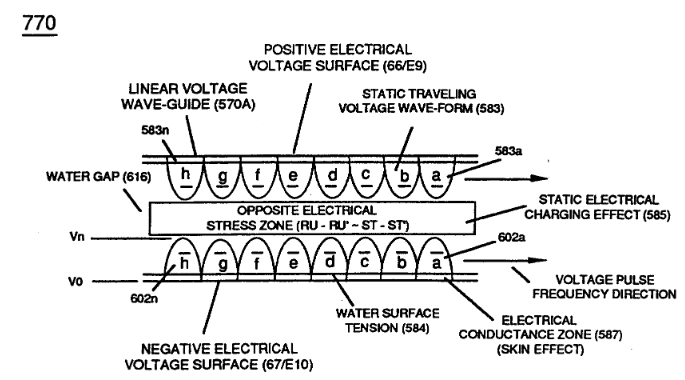Circuit Function
To form an oscillating voltage zone around another voltage zone of opposite polarity, forming a water gap therebetween.
Said voltage zones take on the shape of cavity-design due to the skin effect phenomenon as previously described.
Stainless steel T304 material is also used to form said resonant-cavity (44).
Said resonant cavity (44) can take on different shapes and sizes to meet a predetermined gas need. Spherical and longitudinal resonant cavities are examples.
To disassociate said water molecule by way of voltage stimulation as previously described. See Section A through Section M.
To momentarily entrap said liberated gas atoms to impart or subject a physical force (particle impact) on said water molecule being split apart. This process is called compounding-action or "resonant-action" since said liberated atoms are moved or oscillated in a uniform manner during gas production.
To start, sustain, and maintain said resonant-action during gas-yield attenuation.
To set up a variable pulsing circuit capable of "tuning-in" resonant action regardless of shape and dimensional size of said resonant cavity (44).
And to attenuate said voltage pulses (up to and beyond 5,000 volts) to cause said liberated gas atoms to reach ionization state.

